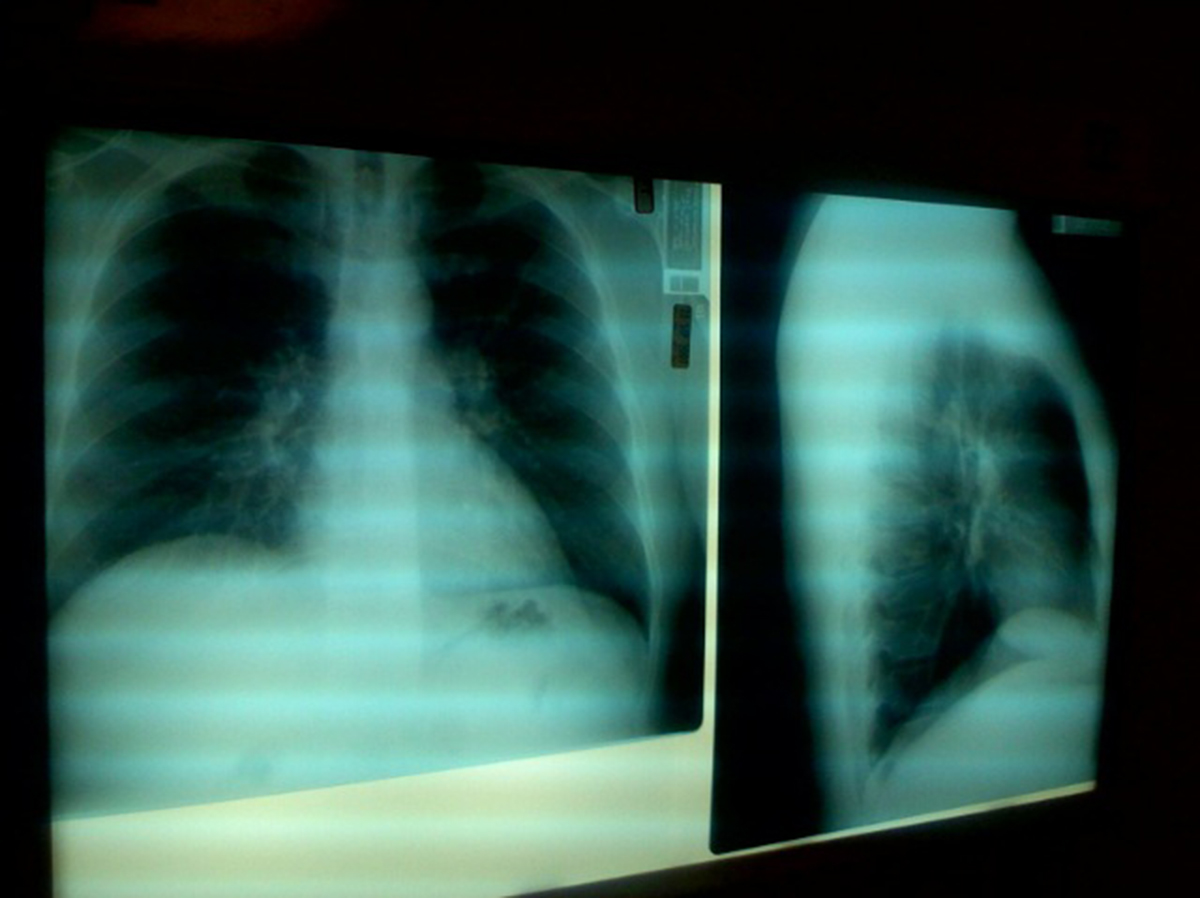Agammaglobulinemia (AGMX), or hypogammaglobulinemia, is a rare genetic disorder that is passed down in families that have low levels of immunoglobulins. Immunoglobulins are protective immune system proteins. Low levels of these antibodies will make a person more susceptible to infections. It is passed from parent to child and it was one of the very first immune system diseases ever identified.
What Causes Agammaglobulinemia?
The disease is the result of a genetic abnormality on the X chromosome that interferes with the human body’s ability to manufacture antibodies. The gene involved is known as “Bruton’s Tyrosine Kinase” or BTK, and it was first identified in 1993.

Agammaglobulinemia happens more often in men than in women because the mutation involves the X-chromosome. Males only have one X-chromosome. Therefore, a single defect in the gene can result in the disease and this is called “X-linked inheritance.” Females have two X-chromosomes and it is possible for them to be carriers of agammaglobulinemia. In women, a normal gene copy can mask the defects and problems caused by the mutation. Both of a female’s parents must have the gene to pass on the AGMX mutation to her.
People with agammaglobulinemia tend to develop repeated infections due to bacteria such as Haemophilus influenza, pneumoccoi and staphylococci. The most common areas to be affected by an infection include; the upper respiratory tract, joints, lungs, skin, and gastrointestinal tract.
What Are The Symptoms Of AGMX?
The symptoms of agammaglobulinemia usually show up in children between six and nine months of age. However, some children will not develop the symptoms of this disorder until they are between three and five years old. Boys will usually show signs of the disease before girls do.
The most common symptoms of the disease include:
- Frequent bouts of bronchitis
- Chronic diarrhea
- Infections of the eyes
- Infections of the ears
- Pneumonia
- Sinusitis
- Skin infections
- Upper respiratory tract infections
- Viral infections such as polio and/or hepatitis
- Blood stream infections
- Spinal cord infections
- Bone infections
- Kidney inflammation
- Joint disease
- Red blood cell breakdown
- A reduction of neutrophils in the blood
- Failure to thrive/grow
- Blood or colon cancer are possible, although extremely rare
- Muscle and skin inflammations
Many of these conditions happen in children without this disease. However, children who have agammaglobulinemia tend to get sick more often and have more severe symptoms.
READ Autoimmune Hemolytic Anemia: An Autoimmune Disorder that can Damage Your Heart
How Is Agammaglobulinemia Diagnosed?
Agammaglobulinemia is diagnosed through a series of different tests. A doctor may order a flow cytometry to measure the levels of circulating B lymphocytes in the blood. Another test that can be used is the immunoelectrophoresis serum test and a quantitative immunoglobulin test could also be performed.
Treatment Options For AGMX
The most common method of treating AGMX is through intravenous infusion of immunoglobulin (IVIg) every few weeks, for the rest of a person’s life. IVIg is not a cure for agammaglobulinemia, but it increases a person’s life span and quality of life. These antibodies generate passive immunity and boost the immune system. With proper treatment, the number and severity of infections a person faces is exponentially reduced.
With IVIg, a person may live a fairly healthy life. The ideal dose of human IgG antibodies in the blood should be higher than 800 mg/kg and it is based on a person’s weight and IgG blood count. Intramuscular injections (IMIg) of immunoglobulin were very common before IVIg became available, but it was less effective, more painful and has since become nearly obsolete.

Another common way of treating this disease is through the use of antibiotics because of all the infections a person experiences. One new revolutionary method for treating AGMX is through the use of gene therapy, which could lead to a possible cure. Gene therapy technology is still in its early stages and it could cause complications like cancer or death. However, the long-term success and any potential complications from this treatment are currently unknown.
Things To Consider
Often, serology is used to diagnose viral diseases. Because people with agammaglobulinemia have no antibodies, these types of tests always produce a negative result regardless of the person’s genuine condition. This applies to HIV tests as well. Specialized blood tests are necessary in order for there to be a proper viral diagnosis in people with AGMX.
It is not advised and it can be extremely dangerous for someone with agammaglobulinemia to receive live versions of the polio, measles, mumps and rubella vaccines. Special considerations should be given to avoid the oral live attenuated polio vaccine, because it could cause the person to develop polio.
People who have AGMX are extremely susceptible to viruses from the enterovirus, coxsackie virus, polio virus and echoviruses. These viruses can cause problems with the central nervous system including meningitis, encephalitis and even death in some cases. There is no particular hazards for people with this condition in regards to dealing with or living with pets or doing outdoor activities.
Agammaglobulinemia Prognosis
For a person who has been diagnosed with agammaglobulinemia, there are many treatment options to consider. Most often this disorder is treated using a combination of different therapies, as well as IVIg or SCIg. Because of recent developments and research breakthroughs, people with AGMX now have improved health and a better overall quality of life.
READ What Is Your Risk Of Autoimmune Disease?
You should call your physician or healthcare provider if you or your child has experienced frequent bouts of infection, have a history of agammaglobulinemia or another immunodeficiency disorder and/or if you are planning to have children. With genetic counseling offered to prospective parents, it is possible to discover if one or both are carriers of AGMX and what the chances are that the disease would be passed along to any of their potential offspring.
- Photo courtesy of scottfeldstein via Flickr: www.flickr.com/photos/scottfeldstein/1428620295
- Photo courtesy of USDAgov via Flickr: www.flickr.com/photos/usdagov/8412902042
- primaryimmune.org/about-primary-immunodeficiencies/specific-disease-types/agammaglobulinemia-x-linked-autosomal-recessive/
- www.nlm.nih.gov/medlineplus/ency/article/001307.htm
- ghr.nlm.nih.gov/condition/x-linked-agammaglobulinemia
- www.aaaai.org/conditions-and-treatments/primary-immunodeficiency-disease/x-linked-agammaglobulinemia.aspx

